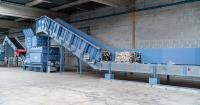 Add My Company
Add My Company
Sign In
CAN PLASTICS IN CONSTRUCTION BE SUSTAINABLE?
31-05-2022

In order to combat climate change and to truly build for the future, we need to reduce our carbon footprint as an industry, the third-biggest greenhouse gas emitter worldwide. Moreover, the construction industry is the number one energy consumer in the world and the second largest user of plastics. As a group, SOPREMA is devoted not only to increasing the energy performance of buildings and the comfort of their inhabitants and users, but also to addressing the environmental challenges that we are facing as a society. Our XPS insulation, for instance, shows that plastics in construction can be sustainable after all. Read on to find out how.
PLASTIC CONSUMPTION VERSUS PLASTIC WASTE
The level of interest in plastic pollution has grown exponentially since BBC’s Blue Planet first aired, making the larger public aware of the amount of plastic waste in our oceans – “the Blue Planet effect,” as some experts call it. Since then, there has been an even greater drive to find ways to avoid the use of plastics (especially single-use plastics) across all industries, including construction.
In this respect, it is important to distinguish between plastic consumption and plastic waste. The latter relates to single-use, non-recyclable plastics, which significantly increase the environmental impact of your project, while the former need not be bad news in construction. As counterintuitive as it may sound, plastics can contribute to sustainability and reduced material use over time. Thanks to innovative product development, the use of plastics in construction can actually deliver environmental benefits. Firstly, it can divert waste from landfill; secondly, it can improve a building’s thermal performance; and thirdly, it can extend the service life of a building.
1. DIVERTING WASTE FROM LANDFILL
SOPREMA’s XPS insulation provides a good example of construction materials diverting waste from landfill. Manufactured with climate-friendly CO2 technology, this BREEAM A-rated extruded board is made from recycled plastic and completely recyclable at the end of its service life as well. The product has a 60-year lifespan, after which it can be perfectly separated from the other layers (when the building shell gets disassembled) and neatly processed for reuse, demonstrating how existing materials can become a long-term resource.
Other examples include the reinforcements we use in our bituminous membranes, which are made from 75% recycled plastic bottles or recycled glass fibre, and the SOPRALOOP recycling line in Strasbourg. Since July 2019, the latter unit has been mechanically and chemically recycling PET trays and PET bottles into polyols which are, in turn, used to manufacture insulating foam. Clearly, the distinction between the use of virgin plastics and recycled plastics is just as important as the distinction between single-use plastics and plastic-based materials with an extended service life.
2. IMPROVING BUILDING PERFORMANCE
The performance of the material should be considered, too, in the context of the building’s environmental footprint – both during the construction phase and long after. To use SOPREMA’s product offer as an example again: our XPS insulation boards enhance the thermal performance of a building, thereby reducing its energy demand.
3. EXTENDING THE SERVICE LIFE OF A BUILDING
Finally, it is important to consider the durability of construction materials, as they determine a building’s service life to a great extent, as well as its maintenance requirements. When it comes to the relative sustainability benefits of building products, non-plastic materials that need regular replacement are known to generate waste across the raw material, manufacture and disposal cycle in a way that robust plastic alternatives do not.
PLASTICS IN CONSTRUCTION: FROM PROBLEM TO SOLUTION
When assessing the environmental profile of plastics in construction, there are clearly a lot of factors to take into account, including the source of the material and the embedded carbon emissions associated with manufacture. The goal now is to innovate in ways that address the problems of finite resources and pollution without vilifying a material that can contribute to reducing waste, improving building performance and delivering an extended service life.
For more information on CAN PLASTICS IN CONSTRUCTION BE SUSTAINABLE? talk to SOPREMA UK
Enquire Now
More News
List your company on FindTheNeedle.
